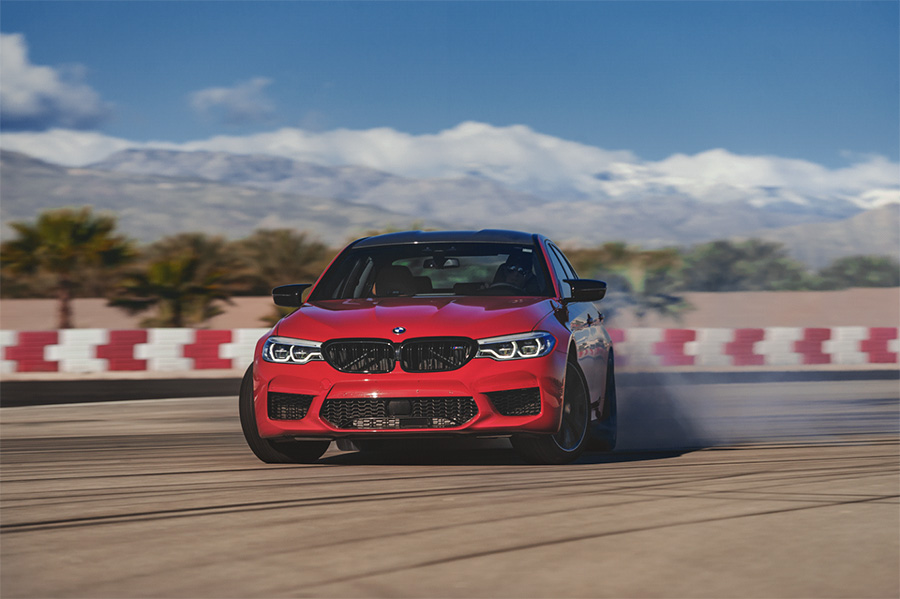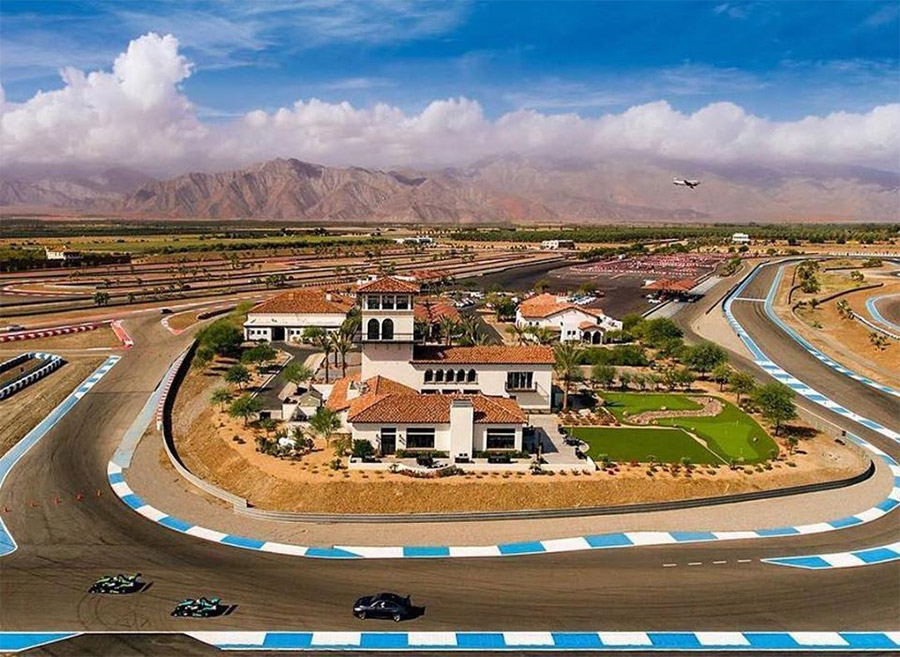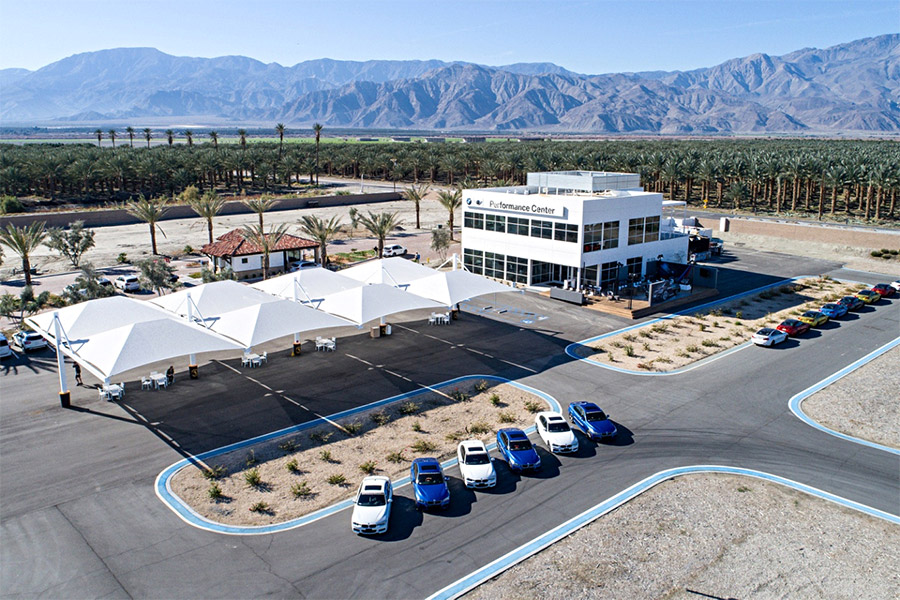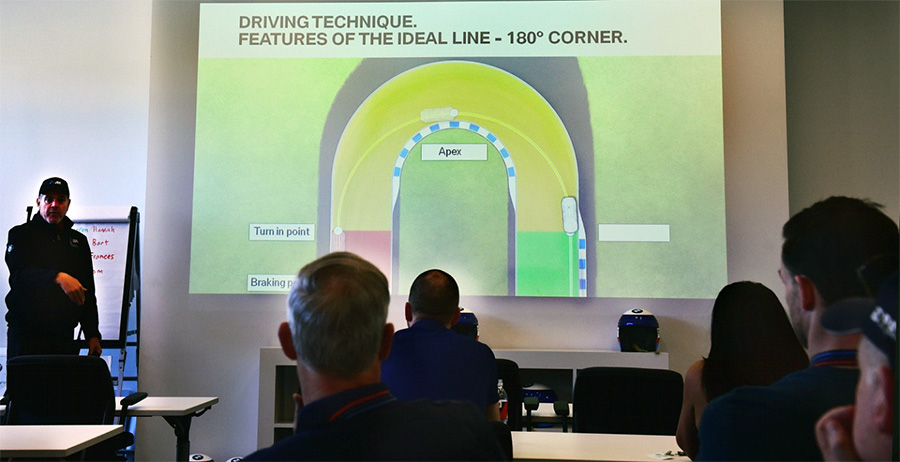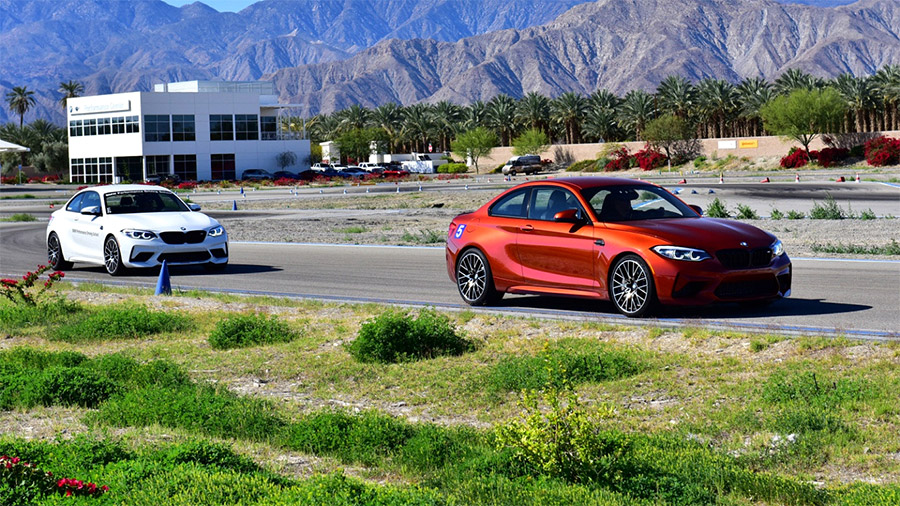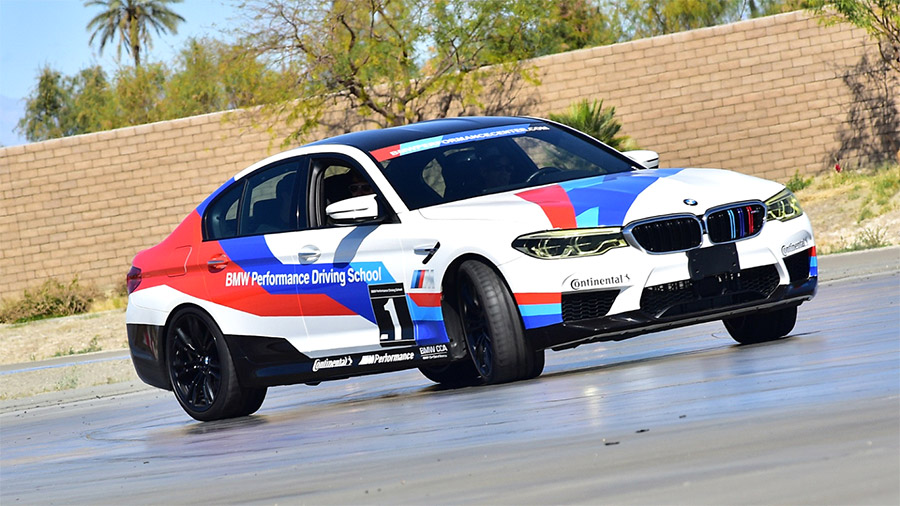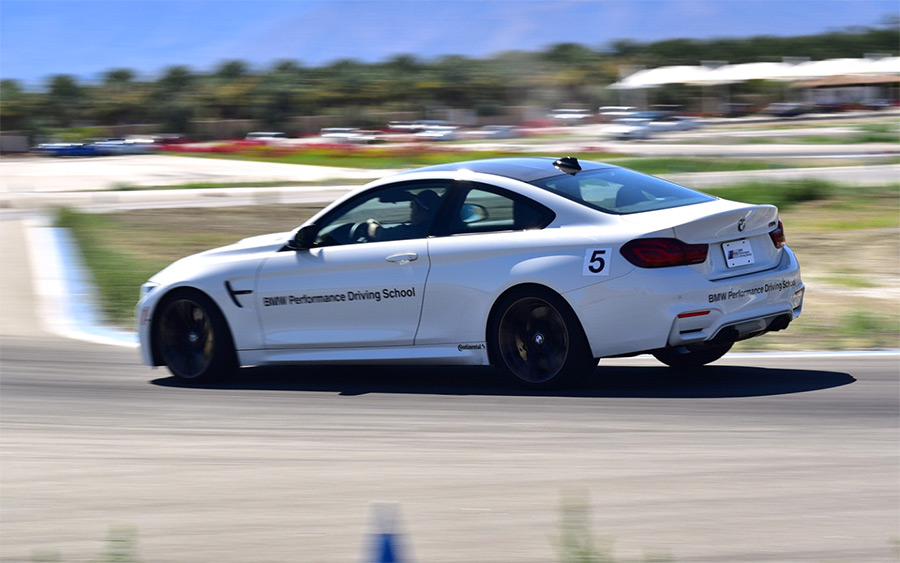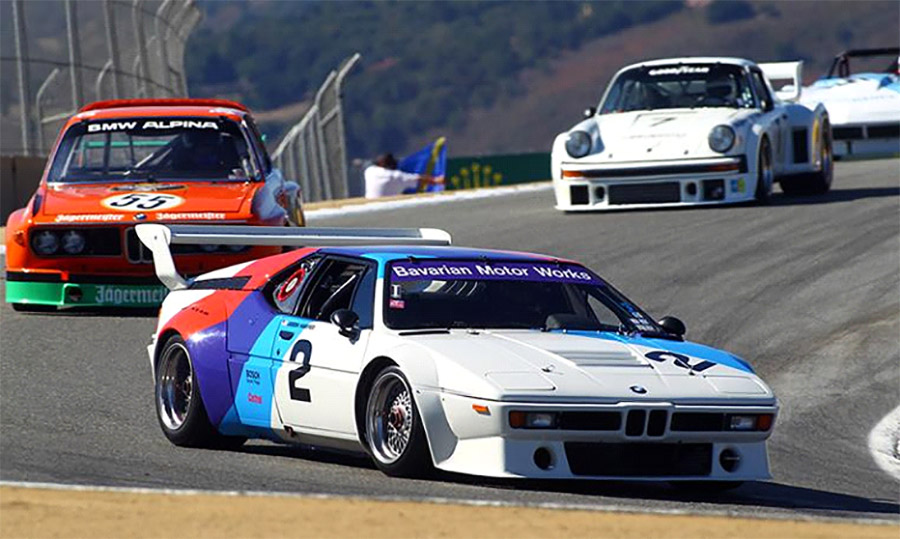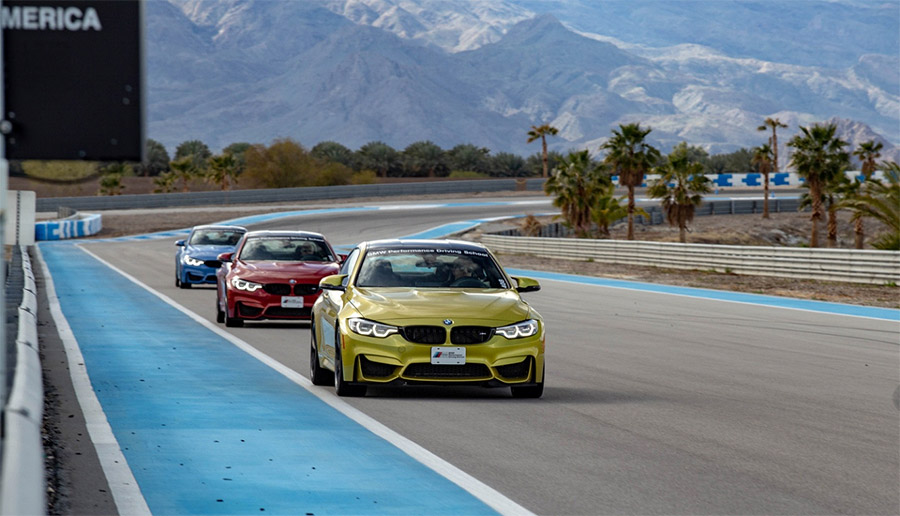The BMW “M” performance brand was born in 1972, when BMW expanded its motorsport program and launched an effort to raise its global profile. Once BMW racing gave birth to the M brand, it wasn’t long before select BMW road cars were also blessed with an extra performance edge.
Over forty years later, BMW is a global force and the M brand is a key reason why. To learn more, resident Speed Journal driver Jeff Francis headed to the Thermal Club, near Palm Springs, California for a day immersed among the current range of BMW M cars.
Established in 2012, the Thermal Club is a private country club built around a race track rather than a golf course. BMW selected Thermal for its Performance Center in 2015. The west coast Thermal Club location complements BMW’s Performance Center on the east coast at Greenville-Spartanburg, South Carolina.
The one-day M school applies an M twist to the standard one-day BMW school, exclusively employing BMW M models. After a brief welcome in the permanent two-story structure build by BMW, the instructors started with driving basics. Lead instructor Brian Randall opened with seating position, which is critical for adequate sightlines and absorbing signals the car communicates. Randall implored the students to remember not to confuse effort with effect. Sitting closer to the wheel with bent arms avoids wasting effort with extended arms when seated further from the wheel.
The familiar “ten and two” is a staple for hand positioning on the wheel, but Randall noted that the origin stems from television and movies where seeing the actors’ hands made a better visual effect. Likewise, police use the “ten and two” instruction when talking to a driver pulled over in a traffic stop to ensure both hands are visible. Neither has anything to do with performance driving. “Nine and three” is the BMW driving standard. It also is better for air bag deployment. To visualize, the students practiced hand-over-hand warm up exercises in the classroom.
The group then pivoted to braking, weight transfer, and grip. The contact patch of the Continental tires outfitted on all BMW Performance Center cars is about the size of a hand. That tiny surface area manages acceleration, turning, and braking. Under braking when momentum pushes the nose down, the tire contact patch under the front tires increases and the tire patch beneath the rear tires shrinks. Naturally, that means the amount of grip available at the rear under heavy braking is limited.
The tire patch only has so much grip to give. Randall’s example was that each driver had $100 in their pocket to spend, but no more. Like money, the tire patch only has so much grip that a driver can spend. A tire can split its grip between turning and braking if both happen at the same time or it can focus its efforts on doing one task well. It only has so much grip to spend. The limited amount of grip available may not serve either need adequately and compromise the corner.
Braking technique was described as both a way to slow the car and a means by which to manage weight transfer. After all, Randall noted that Mario Andretti told him once that the gas and brake pedals were primarily weight transfer tools. In performance driving, an aggressive push on the brake pedal followed by feathering into the corner is the ideal approach. In contrast, street driving generally increases the braking pressure as the car gets further into the brake zone and eases up to avoid a jolt when the car comes to a stop. The racing approach avoids unsettling the car deep in the corner when the tires are trying to manage the task of turning. The physics lesson was designed to help students understand their car’s behavior when driving later in the day.
The chalk talk transitioned to discussing ideal lines through corners. A well-designed arc starts at the outside, slices to the inside apex and then tracks back to the outside at corner exit, maintaining momentum and maximizing exit speed. Corner entry is the key to exit speed.
The group also focused on the importance of driver vision and looking ahead and through the corner. The car tends to follow the eyes, so eyeball discipline is necessary to chart the best course past the apex and to corner exit. Turning in too early or too late has a direct impact on the quality of the line through the corner and the exit speed.
Randall quipped “physics is undefeated,” and that asking the car to overcome those limitations is futile. The lesson for the driver? Understand what is happening, correct the car’s movements, pause to settle the car, and recover to drive away. The lessons built knowledge and a common vocabulary for the driving exercises that followed.
The group of 18 students broke into three groups of six. Francis and his group moved to the handling course with the spritely M2. The agile two-door M2 was well suited to the tight circuit. The miniature road circuit was not wide enough for passing, but was wide enough for drivers to work on the ideal lines from the outside at corner entry, to kiss the inside apex, and then track out to the outside at corner exit. One hairpin named “Patience” required managing the throttle for a long time through the corner before getting back to full throttle.
Some drivers worked the paddle shifter through the first three gears while others left the transmission in automatic and let the car handle shifting. Instructors emphasized the ideal line and maintaining vision. Speed naturally follows the correct line and braking points. The overeager driver who focuses first on speed but fails to learn the fundamentals will never optimize the car or course.
Instructors led students through the circuit in a lead-follow exercise. As students followed to see how it was done, they peeled off to the back of the line and let others have their chance up front. After acclimating, students circulated around the handling course on their own. No passing permitted, so students focused on their own car rather than those ahead or behind.
Module complete, the group rotated to a large flat polished concrete circle for drifting school with a fleet of M5 mounts. The concrete surface sloped gently downhill at one end and uphill at the opposite end. No added water needed to help reduce traction. The concrete was easily slippery enough to get the M5 sideways.
Orange cones were arranged in a circle at the center. Students were taught to keep their eyes ahead. To look elsewhere all but guaranteed a spin. The downward slope required less throttle and the uphill slope required a bit more, but drivers with good throttle control could hold a good drift all the way around the circle. Spins were frequent but the entire exercise was described as loads of fun.
The third exercise of the morning focused exclusively on the act of braking up to the limit and then turning in two distinct movements. Students accelerated their M4 in a straight line and braked to a dead stop, triggering the anti-lock brakes but without locking up the Continental Tires. Drivers who had never braked at the limit or experienced ABS had an eye-opening exercise.
After practice runs, instructors added a right turn through a set of cones. Students pushed hard into the corner, shed speed via threshold braking, pivoted through the cones and accelerated out of the corner. Keeping the wheels turning is critical to retaining turning control – otherwise the tires lock and accept no steering input. The nimble M4 welcomed the repeated abuse as students ran the short exercise, returned to the starting line and did it again.
After a packed morning, the full group retreated to the BMW Performance Center structure on the grounds for an excellent catered lunch. The break allowed an opportunity to socialize with students and instructors. It also allowed a breather to reflect on the assortment of M cars arrayed around the grounds and their historic DNA.
In 1972, the racing division of BMW and its 35 employees was formally organized into a separate entity known as “BMW Motorsport Gmbh.” BMW Motorsport sought to raise BMW’s global profile, primarily on the race tracks of Europe and North America.
BMW had grander plans than merely racing. BMW Motorsport was called upon to inject Bavarian spice into the company’s road cars. The shorthand of “M” quickly became BMW’s calling card for performance. Performance upgrades for road car customers became available in the mid-1970s, but the M1, launched in 1978, was the first car to carry the distinctive “M” badge. The low-production wedge was a sensation and boosted BMW’s performance credentials.
The M treatment was applied to the three series, five series and six series road cars in the 1980s. BMW used the tagline “The Ultimate Driving Machine” and the M models transformed customers into enthusiasts. The M car line became a commercial success and provided a link to BMW motorsports.
Refueled after lunch, the group split again between various driving exercises. Francis and his group headed for Thermal Club’s south circuit. After the students rode with their instructor in an M5 for a lap around the circuit, the group had the opportunity to pilot their own cars during the lead-follow laps.
The M4 was in its element on this course. It combined strong power and handling. The 3 liter in-line 6-cylinder engine produces 425 horsepower which was perfect for the full sized race course. The BMW electronics accommodated an aggressive throttle, allowing just enough oversteer exiting the hairpins to rotate the car and to get it pointed for corner exit. The brakes grabbed quickly and consistently.
Drivers used all of the track, moving the car from one edge to the other and soaking up the curbs along the way. The M4 hit 120mph on the straights and yearned for more room to stretch. The tantalizing glimpse of the M4 performance envelope showed its true capabilities and gave a peek into the next levels of BMW Performance Center courses.
It was surreal when thundering down the straights to see Thermal Club homes just adjacent to the track. The country club concept makes best use of the views and vistas across the facility and there were both completed homes and homes under construction during this visit. Some of the trackside walls and barriers are even integrated into the homes, but with windows situated high for safety purposes. The Thermal Club has its own high-end clubhouse and other amenities to create a motorsports oasis for owners and guests.
Next up was the “Rat Race,” which was a competitive event laid out on the large concrete skid pad with an oval of orange cones setting the inside limits. Two drivers in four door M5s started on opposite sides of the oval and tried to catch each other. The winner either caught the other car or was the first to complete three full laps. Injecting a competitive element amped up the energy. Winning drivers earned the right to keep competing until a mother and daughter duo ran in the finals (the mother claimed the victory).
After the day of training and track experiences, different driving approaches emerged in the “Rat Race.” Some drivers clung tightly to an inside line next to the orange cones with no sideways sliding. Others took a wider line and circulated with minimal drift. Others took full advantage of the opportunity to drift their M5 around the entire oval which may have been the most fun, but proved to be the slowest.
The last module returned to the tight handling course, and the fleet of M2’s to test the stopwatch. Instructors did two demonstration laps and each student did three practice laps before students were released for timed runs. Drivers called on as much of the 405 horsepower that the M2 could muster and made the Continental Tires scream for mercy. The ABS worked to its limit, and the traction control electronics strained against the violent turns and sideways slides. The lap ended with hard threshold braking into a box outlined with cones. Blowing the box cost a lap-killing two second penalty.
Before final goodbyes, the BMW instructors capped off the day with hot laps complete with lurid slides and plenty of shredded Continental Tires. Laws of physics remained undefeated, but were challenged. Instructors violently threw the M cars into huge smoky drifts. The rears of the cars wagged back and forth around the entire course, more sideways than pointed in a straight line. Instructors artistically traced curves on the pavement canvas as their passengers alternated between laughter and gasps. Seeing a gaggle of BMW’s in unnatural positions bellowing tire smoke on the winding drifting course was truly a grand finale.
The group gathered in the conference room at the Performance Center for final comments and farewells. Medals of honor were awarded for success in the handling circuit competition and the class re-lived the day with stories and laughter.
BMW Performance Center west has become a home for all things BMW on the west coast. The center hosts a full range of driving schools and programs and as well as tailored corporate and group events. Since opening in 2015, a steady stream of enthusiasts has sampled BMW offerings and enjoyed a day or two in the desert. The M school was well organized, thoughtfully matched different M cars to the various exercises, and made great use of the facility. The instructors were top notch and students learned a few things while enjoying themselves.
The Speed Journal would like to thank the BMW Performance Center and the instructors and staff for a great day at M school – where BMW says “the M stands for More!”
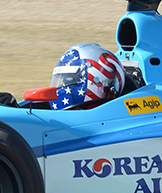
The Driver’s Series scours the world to find and explore compelling driving experiences for anyone with a driver’s license and passion for speed. We send our resident driver Jeff Francis to get behind the wheel and report back to Speed Journal readers to ride along virtually or become inspired to take on the driving experiences themselves. Are you involved with a driving experience that should be featured on The Speed Journal? Do you have a driving experience suggestion for The Speed Journal to investigate? Please contact us.



